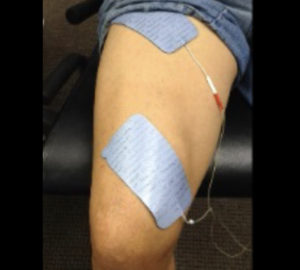CORE Physical Therapy In Omaha Explains…
By Dr. Mark Rathjen PT DPT CSCS
CORE Physical Therapy Co-owner
17660 Wright St. 9/10
Omaha NE
402-933-4027
The summary of the below article is as follows…
At CORE Physical Therapy in Omaha, We specialize in the treatment of athletes. We have worked with athletes for a combined 30 years. CORE was established in 2015 by Dr. Mark and Dr. Claire Rathjen is family owned and operated.
We are proud to serve the greater Omaha metro area.
For More information, Please feel free to contact us http://coreomaha.com/contact/
Please feel free to follow us at https://www.facebook.com/COREomaha/
To get started http://coreomaha.com/getting-started/
For more Blog information http://coreomaha.com/blog/
Youtube Account linked below.
https://www.youtube.com/channel/UCVg8OSN5h-i1n_ykw1Gvahg?view_as=subscriber
Original article posted below has been quoted be CORE Physical Therapy in Omaha
. 2018 Feb;26(2):399-410.
doi: 10.1007/s00167-017-4669-5. Epub 2017 Aug 17.
Neuromuscular electrical stimulation is effective in strengthening the quadriceps muscle after anterior cruciate ligament surgery
- PMID: 28819679
- DOI: 10.1007/s00167-017-4669-5
Abstract
Purpose: Reduced ability to contract the quadriceps muscles is often found immediately following anterior cruciate ligament (ACL) surgery. This can lead to muscle atrophy and decreased function. Application of neuromuscular electrical stimulation (NMES) may be a useful adjunct intervention to ameliorate these deficits following ACL surgery. The purpose of this review was to determine whether NMES in addition to standard physical therapy is superior to standard physical therapy alone in improving quadriceps strength or physical function following ACL surgery.
Methods: A computer-assisted literature search was conducted utilizing PubMed, CINAHL, PEDro and Cochrane Library databases for randomized clinical trials where patients after ACL surgery received NMES with the outcome of muscle strength and/or physical function. Random effect models were used to pool summary estimates using standardized mean differences (SMD) for strength outcomes. Physical function outcomes were assessed qualitatively. Methodological quality was assessed from the Physiotherapy Evidence Database (PEDro)-score.
Results: Eleven studies met our inclusion criteria; results from six of these were pooled in the meta-analysis showing a statistically significant short-term effect of NMES (4-12 weeks) after surgery compared to standard physical therapy [SMD = 0.73 (95% CI 0.29, 1.16)]. Physical function also improved significantly more in the NMES groups. PEDro scores ranged from 3/10 to 7/10 points.
Conclusion: NMES in addition to standard physical therapy appears to significantly improve quadriceps strength and physical function in the early post-operative period compared to standard physical therapy alone.
Level of evidence: I.
Keywords: ACL; Muscle strength; NMES; Physical therapy; Quadriceps.
Similar articles
-
Am J Sports Med. 2020 Aug;48(10):2429-2437. doi: 10.1177/0363546520933622. Epub 2020 Jul 6.PMID: 32631074 Free PMC article. Clinical Trial.
-
J Neuroeng Rehabil. 2019 Jul 12;16(1):89. doi: 10.1186/s12984-019-0566-0.PMID: 31299999 Free PMC article.
-
Phys Ther. 2020 Dec 7;100(12):2154-2164. doi: 10.1093/ptj/pzaa169.PMID: 32939539
-
J Orthop Sports Phys Ther. 2010 Jul;40(7):383-91. doi: 10.2519/jospt.2010.3184.PMID: 20592480 Review.
-
Br J Sports Med. 2019 Mar;53(5):289-298. doi: 10.1136/bjsports-2017-098401. Epub 2018 Sep 7.PMID: 30194224 Free PMC article. Review.

